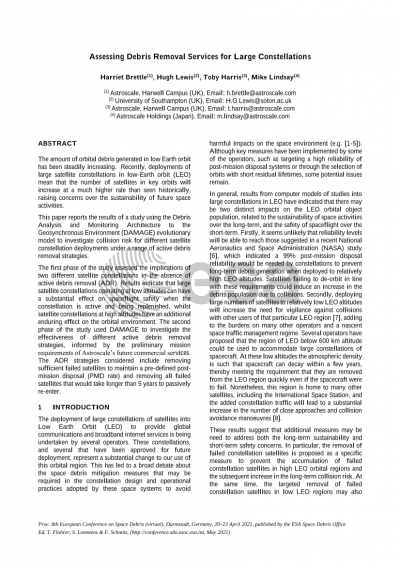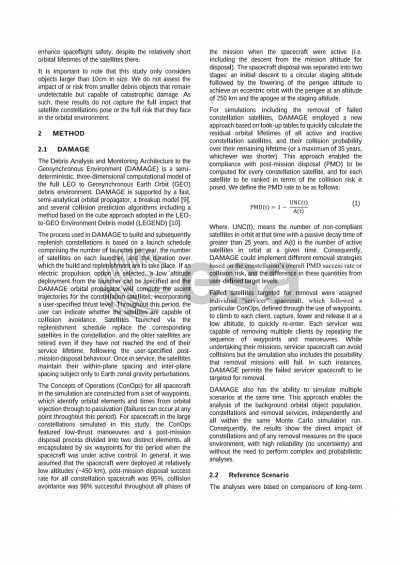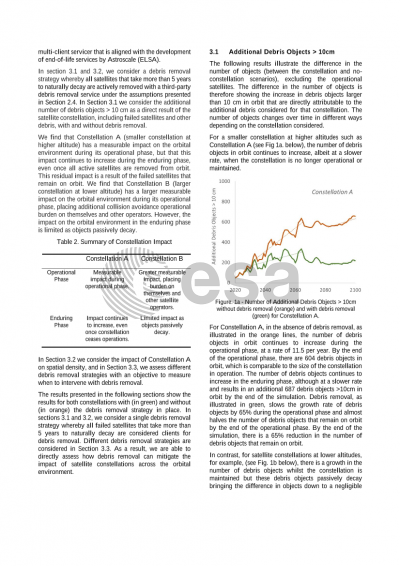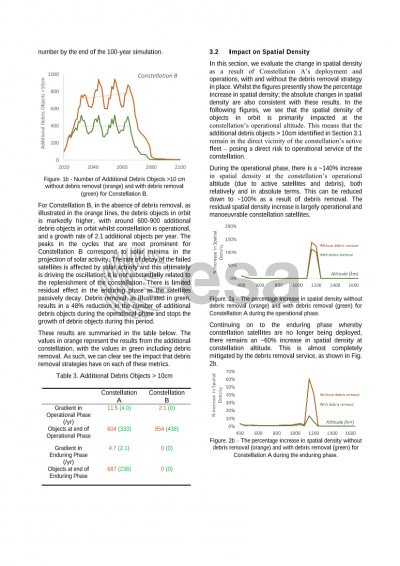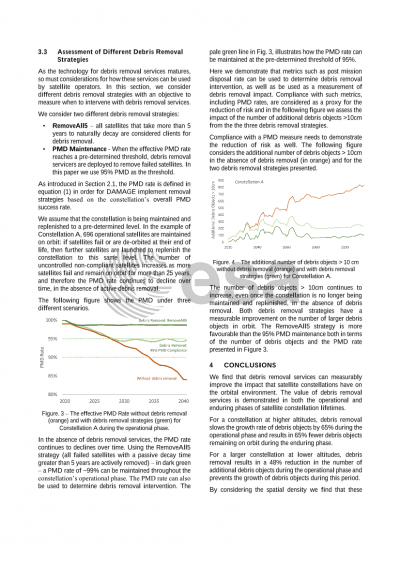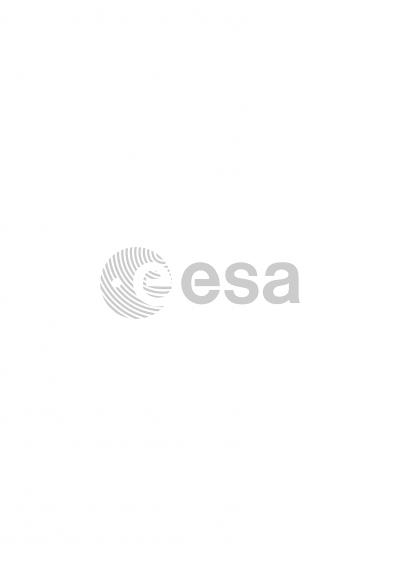Document details

Abstract
The amount of orbital debris generated in low Earth orbit has been steadily increasing. Recently, deployments of large satellite constellations in low-Earth orbit (LEO) mean that the number of satellites in key orbits will increase at a much higher rate than seen historically, raising concerns over the sustainability of future space activities.
This paper reports the results of a study using the Debris Analysis and Monitoring Architecture to the Geosynchronous Environment (DAMAGE) evolutionary model to investigate collision risk for different satellite constellation deployments under a range of active debris removal strategies.
The first phase of the study assessed the implications of different satellite constellations in the absence of active debris removal (ADR). These preliminary results indicated that large satellite constellations operating at low altitudes can have a substantial effect on spaceflight safety when the constellation is active and being replenished, whilst satellite constellations at high altitudes can have a long-term effect on the orbital environment. For example, the addition of a satellite constellation of around 3000 satellites operating at 600km results in an additional 600-800 pieces of debris (larger than 10cm) in orbit for the time during which the constellation is being actively maintained and replenished. For a smaller constellation of around 600 satellites operating at 1200km, the increase in pieces of debris is lower but, in the absence of external debris removal services, continues to increase for the duration of the simulation, even once the constellation is no longer being replenished and leads to a long-term impact on orbital sustainability.
The second phase of the study used DAMAGE to investigate the effectiveness of different active debris removal strategies, informed by the preliminary mission requirements of Astroscale’s future commercial services. The ADR strategies considered included: removing a fixed number of failed satellites each year, removing sufficient failed satellites to maintain a pre-defined post-mission disposal (PMD rate), and removing all failed satellites The study assessed ADR strategies for proposed satellite constellations, as well as considering the overall effect of multiple satellite constellations in operation over the same timeframe.
Preview
